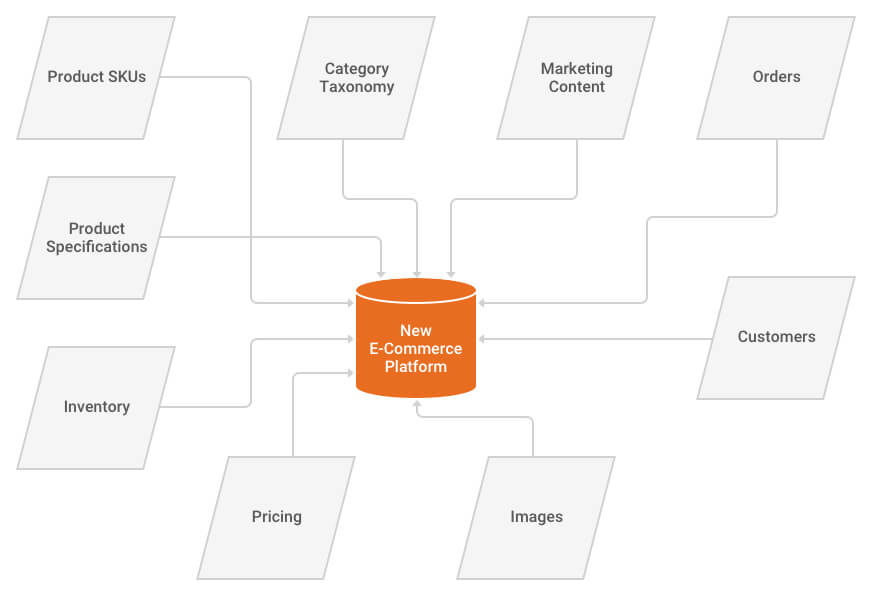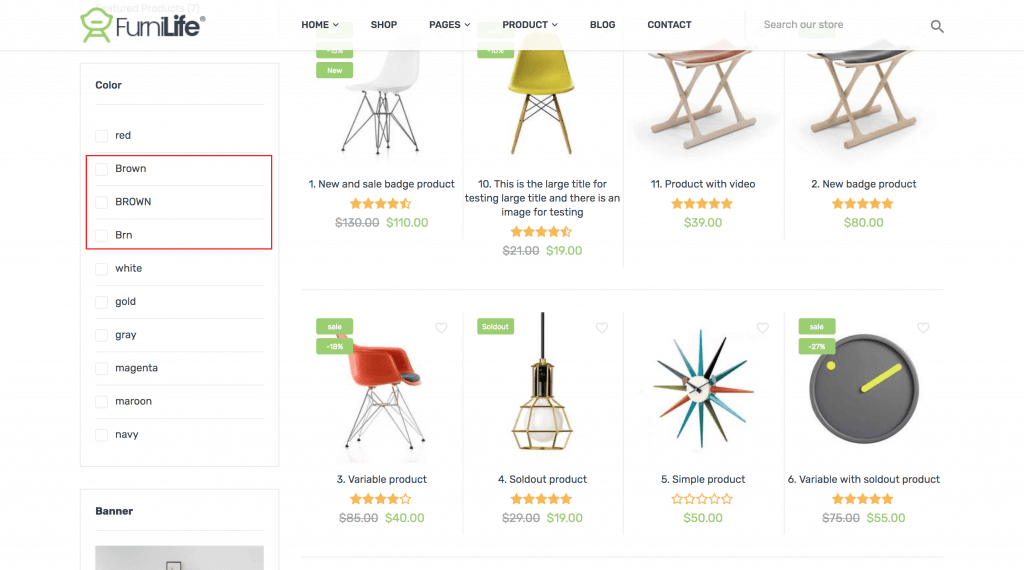Jeff Tarullo is a Senior Manager, Business Solutions Delivery
Data presents one of the largest hurdles for a business to clear when undergoing an ecommerce implementation. Whether it’s migrating existing data, cleansing it prior to loading into the new system or collecting new product attributes to support an improved customer experience, data almost always ends up being the long pole in the tent. Because of this, if an organization is not prepared, they pose risks to the project timeline and budget. However, with a bit of upfront analysis of how data-ready their organization is and what actions need to be taken prior to go-live, digital business stakeholders can mitigate these risks and ensure a “Future Ready” implementation.
Do You Know Where Your Data is?
The first step in assessing data-readiness: identify where all the components of your product catalog live. It is likely not just in one system. So what lives where? This includes: Product attributes and specifications, product pricing, inventory, category taxonomy, images and graphics, marketing content, order history, customer data, etc. All of these are essential components that need to be accounted for when standing up a new ecommerce implementation. It might be as simple as migrating data as-is from your old platform to your new one, or as complex as taking X different systems and combining their data into a new product master. Regardless of the complexity, knowing where data is stored allows you to gauge the level of effort necessary to move to a new digital future.

How “Good” is Your Data?
With full knowledge of where your data lives, the next step is evaluating data quality. The best way to do this is to look at three quality measures: accuracy, recency, and completeness. Is the data stored in System A a correct reflection of your products, customers, etc.? Has it been updated recently? Is it a complete set of data or are you missing certain attributes or data subsets? These indicators will enable you to decide where you should be sourcing data from before migration. Sometimes it will be consistent within a system, i.e. all images come from your DAM. In other cases, you might need to make rules to ensure maximum quality data is retained. (For example, one product line might be better maintained in your legacy ecommerce platform, while your print catalog database is best for another.) By identifying where data is best, you are better able to understand the potential complexity of your data migration as well as identify areas in which additional content needs to be created.
How structured is your data?
The next step in determining data-readiness relates to data structure, portability, and normalization. Do you have unique identifiers for the data types that need them? Every product, customer and order needs a single attribute that identifies that record as unique. Is there a standard system for how your unique identifiers are constructed that can be replicated as you add additional records? This might be as simple as an order number that increases numerically by one for each new instance or might be be something more involved like a product SKU being a combination of Product Style+Color+Size.
Is your data structured w/individual fields residing in their own attributes? Or does it reside in HTML or PDF formats? If the latter, you’re looking at a manual effort. So, if the data is valuable for your customer experience, you should plan for the effort needed to manually input that into a database.
Lastly, do you have a systematic way of populating data values? For example, when storing a product attribute for color, brown can be input and displayed as Brown or BROWN or BRN or brn. Without normalized data standards, stemming from a master data management strategy, you will run into issues within the front-end experience, such as applying facets to product results. Your data’s structure, portability, and standardization will directly dictate the quality of the user experience you provide, so it’s well worth aligning data and site UX upfront.

Where Does Your Data Need to Go?
The last thing to consider in addition to your ecommerce platform is what other data needs to continue to live in other systems to keep your busy running smoothly? Do any of your current systems act as a single source of truth today? Do pricing or product managers manually input data into other systems for a specific purpose? Conversely, are other systems dependent on order data from your ecommerce platform? Answering yes to any of these might require either an inbound or an outbound integration between your ecommerce platform and another system to programmatically transfer data. By looking at the larger picture of your overall enterprise architecture, you can start to identify what integrations will need to be solutioned and developed as part of your implementation to ensure that data is updated on a regular basis with a minimum amount of manual input.
Wrapping Up
After collecting this information about your business’s data, you (or your strategic partner for digital) should be ready to start planning for your ecommerce implementation. You’ll be able to get to a clear picture of what your future state enterprise architecture looks like and whether an all-at-once or phased approach is more suitable for your launch. In addition, you’ll be keyed into the critical data collecting and cleansing activities that will need to occur prior to a successful launch.





